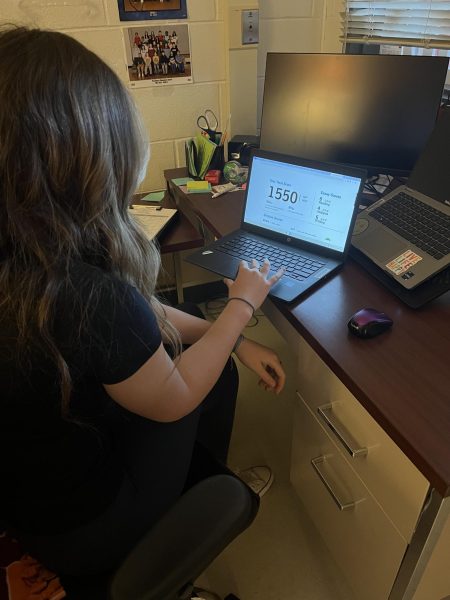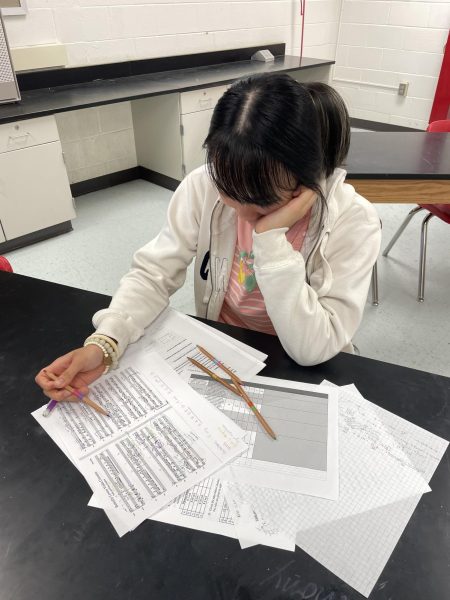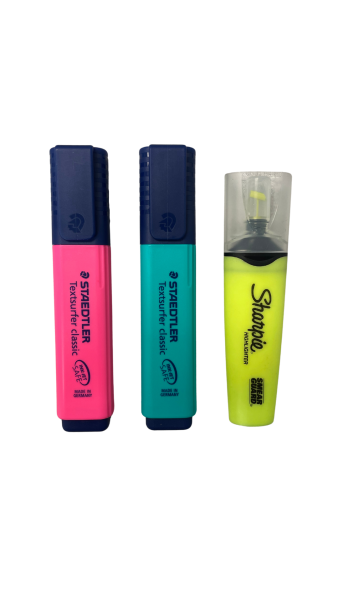Students adjust to new grading scale
Seniors Andrew Nields and Miles Lanham have very different reactions to their new test grades which will have a large impact on their final grades.
As September begins to wrap up, students are managing to adjust to the new 90% summative, 10% formative grading policy that has been implemented at AHS. This new scale is a drastic change from last year’s policy that primarily focused on 60% formative and 40% summative, and it is exclusive to AHS.
“What we were looking at was that the grades kids were getting in class wasn’t an accurate indicator of their learning,” principal Shawn Derose said.
Prior to the Covid-19 pandemic, the gradebook enforced a 60% summative, 40% formative policy. This policy flipped during the 2020-21 school year to 60% formative and 40% summative in an effort to account for students adjusting to online learning.
The goal of the new grading scale was to become more equitable. To provide students with the opportunity to have a large majority of their grade based on their proof of understanding and not the completion of worksheets.
“I do not think the new grading scale has accomplished its goal of becoming more equitable because many of our students, especially ELL students, are not test takers so making 90% of their grade reflect that is not fair,” senior equity club leader Jenna Saykhamphone said. “Additionally, making such a large jump so quickly is not equitable because it doesn’t give students enough time to adjust as it produces more stress.”
The new grading policy was announced at the start of the school year, as teachers found out when they first came into the building, and students found out on the first day of school. The policy has been met with resistance at points from teachers and students, struggling to comprehend why AHS made this decision, and why AHS one of the few schools within FCPS with this policy.
Along with the new grading policy, AHS announced a new unlimited test retake rule, giving students the opportunity to raise their grade even if they received an initial sufficient score. Along with this, students can score up to 100% on their test retake, a significant increase from the previous benchmark of 80%.
“I think the new grading scale helps me keep a higher average in all of my classes. Having the ability to retake a test for full credit is very useful,” senior Evan Burita said. “Also, having the tests weighted so heavily helps me because that way I can study hard for a test and if I do well, I won’t have to worry about small formats pulling down my grade.”
The majority of students remain frustrated, however, questioning why the change was made and how this creates a better learning environment for students.
“I went from an A to a C, and I don’t like that. I find it odd, I mean, last year it was working out fine. I don’t understand why we changed it,” junior Kenny Tang said.
Students can also pick and choose which formative assessments they wish to complete. Understanding that in certain situations, it is not worth putting significant effort into an assignment that will have a minimal impact on their grade.
“I tend to focus more when it comes to tests. I won’t fret on homework as much as a test because homework barely matters” junior Rana Bahr said.
Although it is a demanding change in expectations compared to last year, teachers and staff hope that with this new grading system the grades will better reflect a student’s skills in comprehension through summatives.
“The emphasis on summative grades also makes it important that our assessments are valid,” Derose said. “Administrators and Instructional Coaches are working closely with teachers to ensure that our assessments are indeed accurate reflections of student learning, and that our instruction sufficiently prepares students to demonstrate that learning.”
As the first quarter comes to a close on Sept. 28, many students will close the quarter with between 1-2 summative assessments in the gradebook, placing a heavy emphasis on a single performance. However, with the rolling gradebook, students will have the opportunity to complete test corrections and perform better in the future to increase their grades.

Senior David Sewall is the Editor in Chief of The A-Blast. This is his third year on staff, he previously worked as the Sports Editor and as a Staff Writer....
Junior Rodshi Taiyabah is known to spend her free time reading Webtoons. She is in her first year on The A-Blast staff and more importantly she spends...












